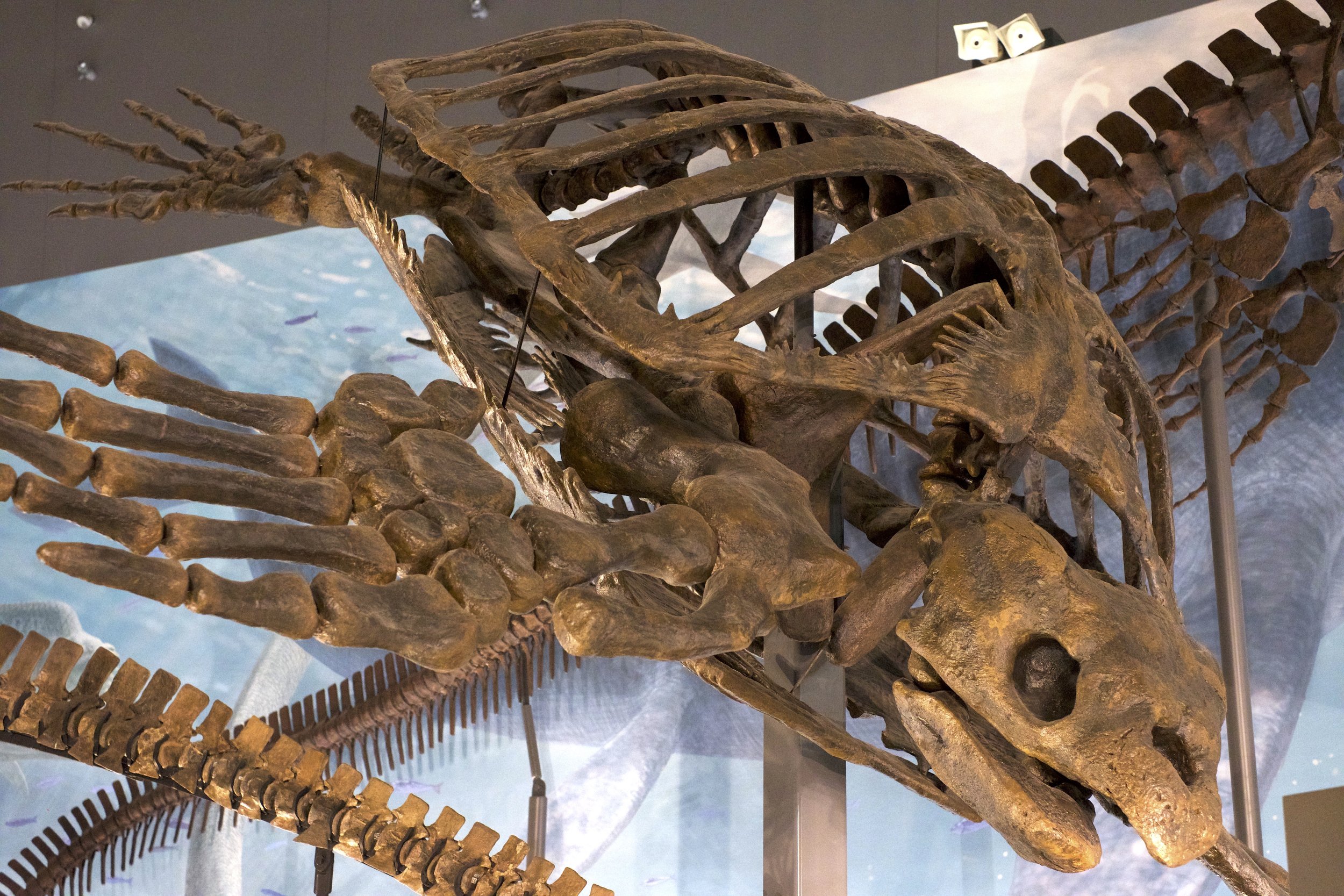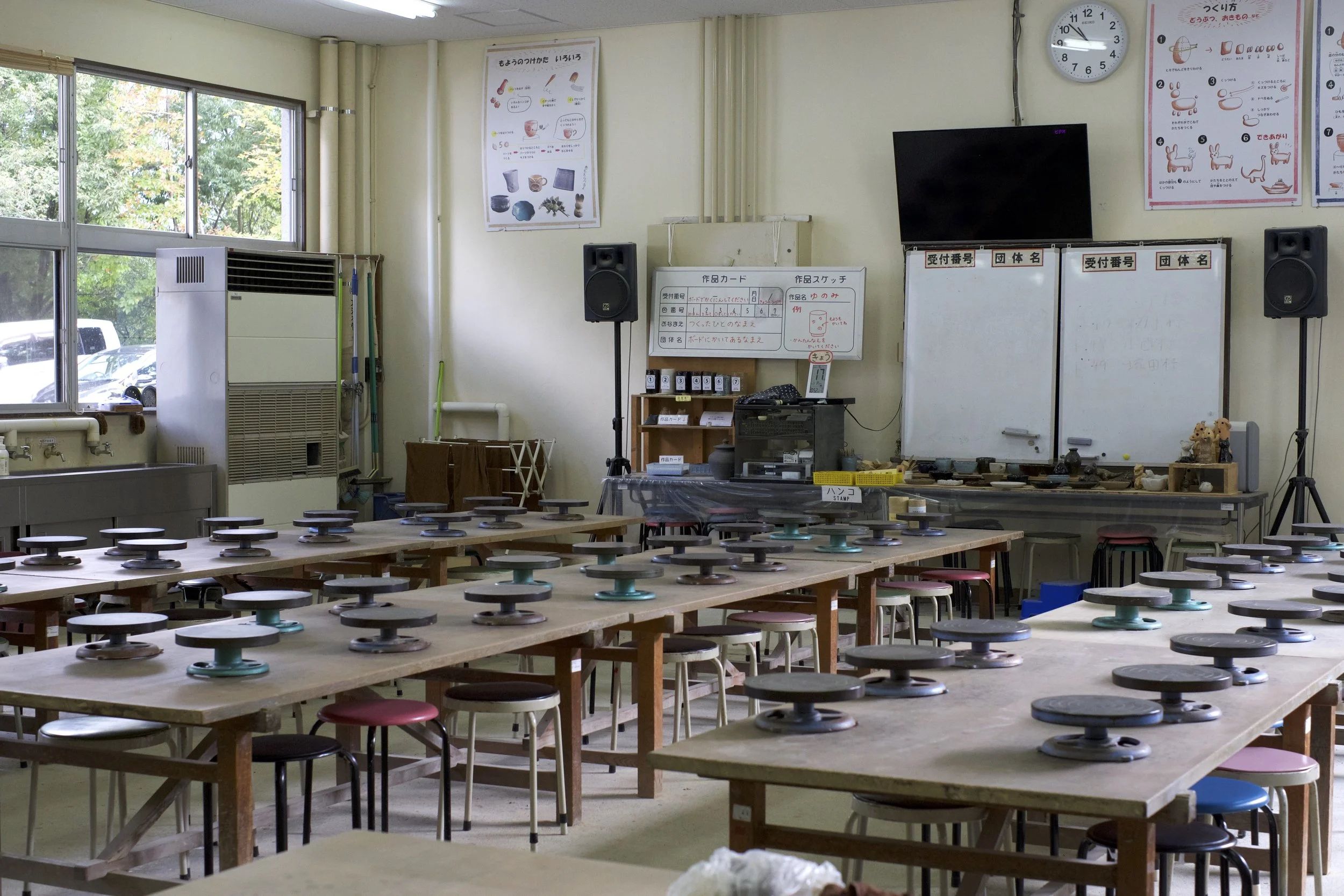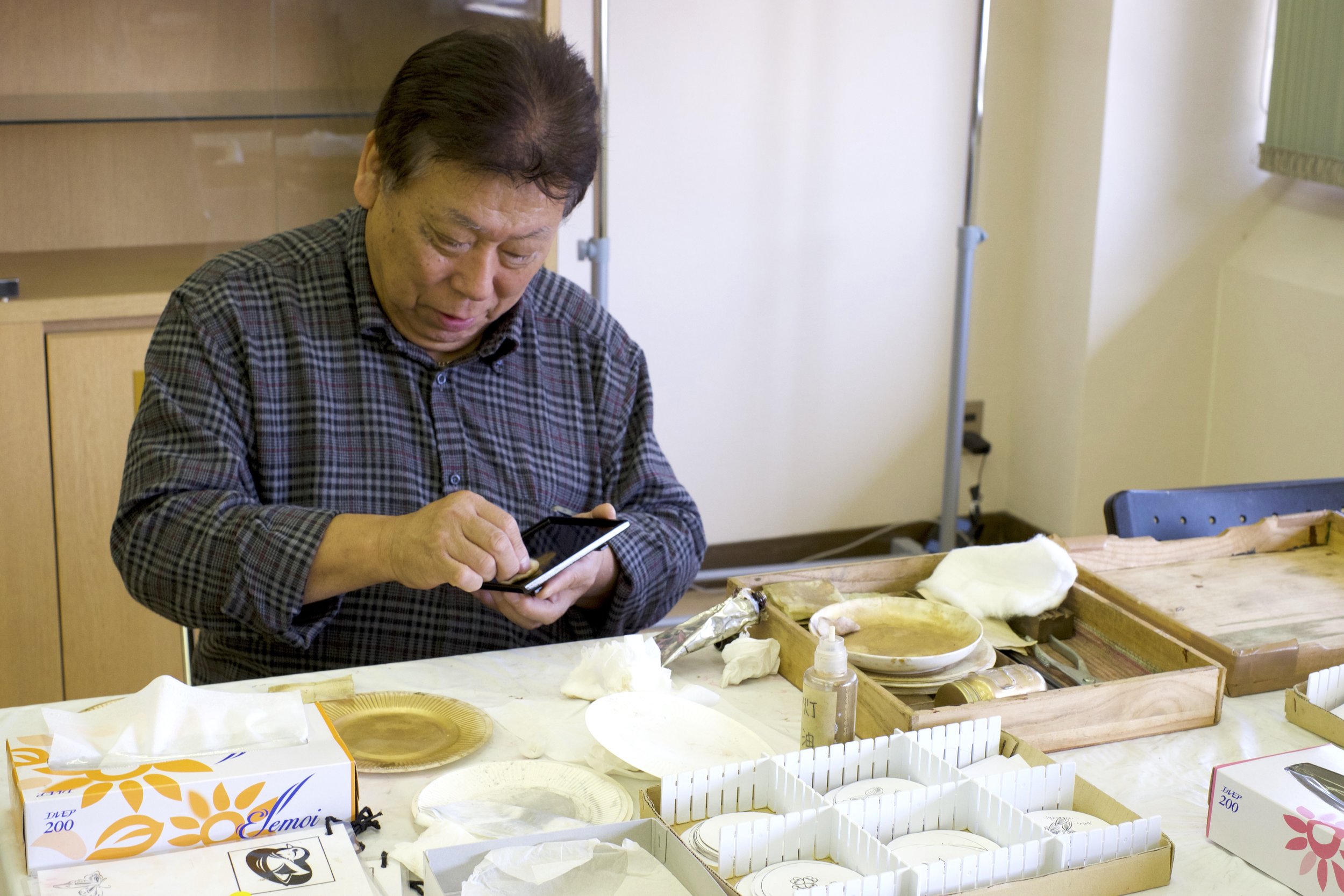Serene Shrines and Sauruses
Fukui Prefecture offers crafts, fossils, relaxation, and so much more.
Presented in partnership with Fukui Prefecture
Photos by Florentyna Leow
As a tourist destination for inbound visitors, Fukui Prefecture often gets short shrift, especially compared with more glamorous neighbors such as Kyoto and Ishikawa Prefectures. But this may start to change when the Hokuriku Shinkansen finally adds Fukui, Tsuruga, Awara Onsen, and Echizen Takefu Stations to its pit stops in March 2024.
For now, Fukui’s sightseeing spots remain relatively quiet and uncrowded, making it an ideal road-trip destination for those with a little more time to spare. Our visit this fall takes us around the cities of Katsuyama, Awara Onsen, and Echizen—all of which yield rich rewards for the visitor willing to rent a car and take the wheel.
Mossy Matters
Gently sloping and meandering, the stone path to the main building of Heisenji Hakusan Shrine is flanked by towering cedars. It is serene, save for birdsong; few visitors are here on a weekday morning. The mid-morning sunlight filtering through the canopy casts dappled patterns of light and shadow on the velvety green moss blanketing the ground, yesterday’s rain heightening the dewy verdure. It’s so absurdly beautiful that I almost want to curl up on the moss and never leave.
However, if you ask historian and resident head priest Hiraizumi Takafusa, the gorgeous mosses on the shrine precincts aren’t the be-all and end-all of these grounds. “It’s not like we promote this place with its moss. We supposedly have over 200 types of moss,” he says. “I can recognize only 20 of the varieties.” According to Hiraizumi, the history of the shrine and the surrounding area are the true highlights.
Located on the edges of Hakusan National Park in what is now Katsuyama City, Heisenji Hakusan Shrine was established as a Buddhist temple in 717 by a monk named Taicho. For centuries, it operated as both Shinto shrine and Buddhist temple—as was common practice prior to the Meiji Restoration—and served as a base for pilgrims making their long, arduous way on foot to the sacred mountain of Hakusan.
At its peak, thousands of monks lived on the precincts, which were about 10 times the size of the present-day sprawling shrine complex. It’s mind-boggling to consider. It will surprise no one familiar with Japanese temple architecture that the complex burned down in the 16th century and was subsequently rebuilt.
The formal separation of Shintoism and Buddhism in the 1870s meant that it became a Shinto shrine first and foremost. However, its name points to vestiges of its Buddhist ties from centuries past—it is a rare instance of a Shinto shrine whose name ends in -ji, meaning “temple.”
The shrine has much to offer history buffs, especially when paired with a visit to the more famous Eiheiji Temple, about 40 minutes away by car. But even without a deep interest in Japanese history, the beauty of this shrine complex alone is mesmerizing enough to warrant an hour or two spent strolling around the grounds. I could happily spend that long peering at feathery mosses, watching long-legged spiders and beetles navigate the moss-furred stumps and stone steps.
The shrine is best visited in spring, fall, or rainy season. Winter is beautiful, too, but perhaps impractical for a visit given the snowy conditions.
Coming of the Raptors
Ask the average Japanese person what Fukui is famous for, and there’s a high chance they’ll say dinosaurs. You could point to any number of reasons for this. For example, many of the dinosaur fossils discovered in Japan were found here. Six new species were identified in (and named after) Fukui: Fukuisaurus tetoriensis, Koshisaurus katsuyama, Fukuiraptor kitadaniensis, Fukuititan nipponensis, Fukuivenator paradoxus, and Tyrannomimus fukuiensis. And, Katsuyama City is home to the world-class Fukui Prefectural Dinosaur Museum (FPDM), which is also an institution dedicated to ongoing dinosaur research and education.
But really, the main reason everyone associates Fukui with dinosaurs is that the area leans hard into being the self-styled Dinosaur Capital of Japan. Dinosaur motifs are everywhere in Fukui: themed restaurants, hotel rooms, playgrounds, stationery, hand towels, and even regular road signs. You’ll find huge dinosaur animatronics outside Fukui Station (they sport Santa hats in winter) and Dr. Raptor on a bench inside. One of the prefectural mascots is a green dinosaur, Rapt-kun, named after the fukuiraptor. I should stress that all this is mostly delightful, rather than gimmicky.
Unsurprisingly, the FPDM is beloved by locals and out-of-prefecture visitors alike. It’s so popular that you’ll see a flashing sign board en route to the museum asking whether you’ve reserved your tickets, which tend to sell fast during summer vacation and major public holidays. The museum even fills up some weekdays.
In truth, I’ve never been interested in dinosaurs, but the FPDM does an excellent job of conveying just how cool these ancient animals are. The main hall is an impressive start to the museum. In a domed exhibition space crammed with dioramas, fossils, and full-body dinosaur skeletons—10 of the 50 specimens on display are actual fossils—I spent a fair amount of time staring at the all-too-realistic T-Rex animatronic glaring ferociously at all of us. If this is what our prehistoric ancestors had to contend with, I am happy to be living in modern times.
As befits one of the world’s leading dinosaur museums, the FPDM has clearly invested in competent translators: the English-language captions are well done, if a tad dry. Plus, it’s fascinating to see how giant raptors evolved into tiny birds over millions of years. It’s well worth spending a few hours here, even more so if you have kids in tow. A shopping spree at the museum’s 100-percent dinosaur-themed gift shop is optional but thoroughly encouraged.
A Bath of One’s Own
Located in what feels like the middle of nowhere (although just a short drive from the Tojinbo Cliffs), Awara Onsen is one of Fukui’s only hot spring towns of note, famous for its healing waters and local cuisine.
We spent the night at the historic ryokan Haiya, whose name translates to House of Ash, a tribute to the craftspeople who produced fine ash used in dyeing clothes worn by Kabuki and Noh theatre actors. The unintentionally amusing name notwithstanding—Uncle Roger would have a field day—Haiya is a ryokan I’d spend several nights in every month if I had the time and money.
Built in 1884, the inn sprawls over three buildings with a total of 43 rooms. The property retains its Meiji-era architectural trappings—along with modern updates like Wi-Fi and coffee machines—and is large enough that a map might almost come in handy for finding one’s way in the maze of winding corridors. All rooms in the original 1884 Shofuan Annex and the recently renovated Kangetsutei Suites, and most of the rooms in the Jurakutou Building, have traditional Japanese garden views.
According to the inn, the room assigned to me—Korin (光輪), meaning “halo” or “nimbus”—was named by Prince Takamatsu. I have no way of verifying this, but the name certainly suits the space with its high ceilings, intricate latticework on the sliding doors, tasteful tableware, 16 tatami mats of space (for up to six people), a private moss-covered garden, and outdoor cypress bath. Best of all, I have it all to myself. Perfect for pretending to be a wealthy writer on sabbatical.
Food and baths are the real draw at most ryokan, and Haiya is no exception. The kaiseki dinner was a leisurely, two-hour affair, a parade of little dishes showcasing freshly caught seafood from the Sea of Japan and produce from the nearby Sakai Plains.
Two highlights from dinner: One, a whole live abalone cooked jigokuyaki-style, or “hell-grilled,” right in front of you until it stops moving. Bouncy yet tender and ocean-fresh, this style of abalone is not for the squeamish. The other, okami’s sake purin, a creamy pot of custard made ever more beguiling with its undertones of boozy umami. To our dismay, this is not a year-round staple, but a seasonal dessert. The idiom “ichigo ichie,” or “for this time only,” has never felt so salient and cruel. (More reason to plan a return trip next October.)
But it’s Korin’s cypress bath I keep coming back to in my mind. Before I checked out, there was a moment where a shaft of sunlight pierced the gap in the bamboo screens in front of the bath just so, illuminating wisps of steam curling up from the surface of the hot water. There was something simple yet transcendent about all these elements coming together for a few minutes before the sun moved on.
The Pleasures of Pottery
In addition to crafts like making washi paper and knives, Fukui is also known for its pottery: Echizen-yaki, or Echizen ware. Notable for its understated coloring, and usually being fired sans enamel, this type of pottery centers on one of the Six Ancient Kilns of Japan, the others being Seto, Tamba, Bizen, Tokoname, and Shigaraki.
Echizen ware is, in fact, a recent term. According to the permanent display at the Echizen Old Kiln Museum, it was coined by the researcher Kuemon Mizuno and Fujio Koyama between 1942 and 1945 as a way to group a number of disparate pottery styles local to the region under a single categorical umbrella. Perhaps unintentionally, this seems to parallel the municipal mergers of the Meiji Era, where many villages and hamlets were amalgamated into new or existing cities.
Both the Old Kiln Museum and the Fukui Prefectural Museum of Ceramics (FPMC) next door have much to offer the ceramics lover by way of exhibitions and beautifully made pieces to add to one’s suitcase. There’s also a traditional teahouse and garden where you can sip on green tea from Echizen ware. But there’s nothing quite like getting your hands dirty to appreciate, on a visceral level, the craft that goes into a piece of pottery.
My visit to the FPMC included a workshop using the electric potter’s wheel. The task was to shape a vessel—anything I wanted, as long as it had a mouth. I had 30–90 minutes. As seems to be true of all craftspeople, ceramicists make their craft look easy when it is anything but. It’s more challenging than it looks to maneuver a solid, spinning hunk of clay. Too little pressure and nothing happens; too much pressure and all hell breaks loose. (Here’s a life lesson: never wear a nice white shirt when taking a ceramics workshop.)
Fortunately, there was a skilled staff member on hand to guide my hands and help fashion the clay into something vaguely presentable. Unless you’re a quick learner, it’s not possible to master the electric potter’s wheel in a single session. It takes practice and more than a little intuition. More saliently, using the wheel is hell on your lower back.
If your work primarily involves a computer, as mine does, it’s easy to forget the pleasures of creating something with your hands, no matter how messy or clumsy the result. Taking a ceramics workshop at a place like the FPMC is a great way to reconnect with the physical world. Reservations here are mandatory, particularly if you’d prefer instruction in English (there are only two English-speaking members on staff). For those living in Japan, they’ll fire and mail the finished piece to you for an additional fee.
Lustrous Lacquer
The Echizen Lacquerware Hall is not somewhere you’d chance upon unless you were looking for it. Located in Sabae City—these days more famous for spectacles than anything else—this unassuming building is all too easy to drive past. Of course, this would be a waste, since it’s a fine place to view superb examples of lacquerware, watch artisans make lacquer magic, shop for lacquerware, and even try out various types of lacquer art for yourself, from applying lacquer to plain wood or painting already-lacquered wood.
This was the final stop on our two-day tour; we were there for the chinkin experience. Briefly put, this involves carving a design onto a lacquered surface, applying a thin layer of lacquer into the engraved lines, then covering it with gold dust or leaf. You then take your finished work home. How difficult could this be?
As the saying goes, these were famous last words. After tracing a motif of your choice onto a lacquered surface—I foolishly chose a detailed crane drawing—you then use a spindly metal chisel to gouge out the lines you’ve drawn, scraping away from yourself in a single direction. Engraving is not at all like drawing; my lines were nowhere as precise as I wanted them to be. Those with fine motor skills will have a better time of it.
I had never thought much of lacquer as a craft, but I gained a newfound respect for lacquer artisans that day. Having tasted a little of what it’s like to carve a design, the exquisite details on the lacquerware on display at museums and exhibitions have taken on more weight and meaning. These days, my clumsily carved crane plate sits on my dining table, reminding me not to take for granted the craft behind beautiful handmade things.
Learn more and plan your visit …
Heisenji Hakusan Shrine
Fukui Prefectural Dinosaur Museum
Haiya
Fukui Prefectural Museum of Ceramics (Japanese only)
Echizen Lacquerware Hall























